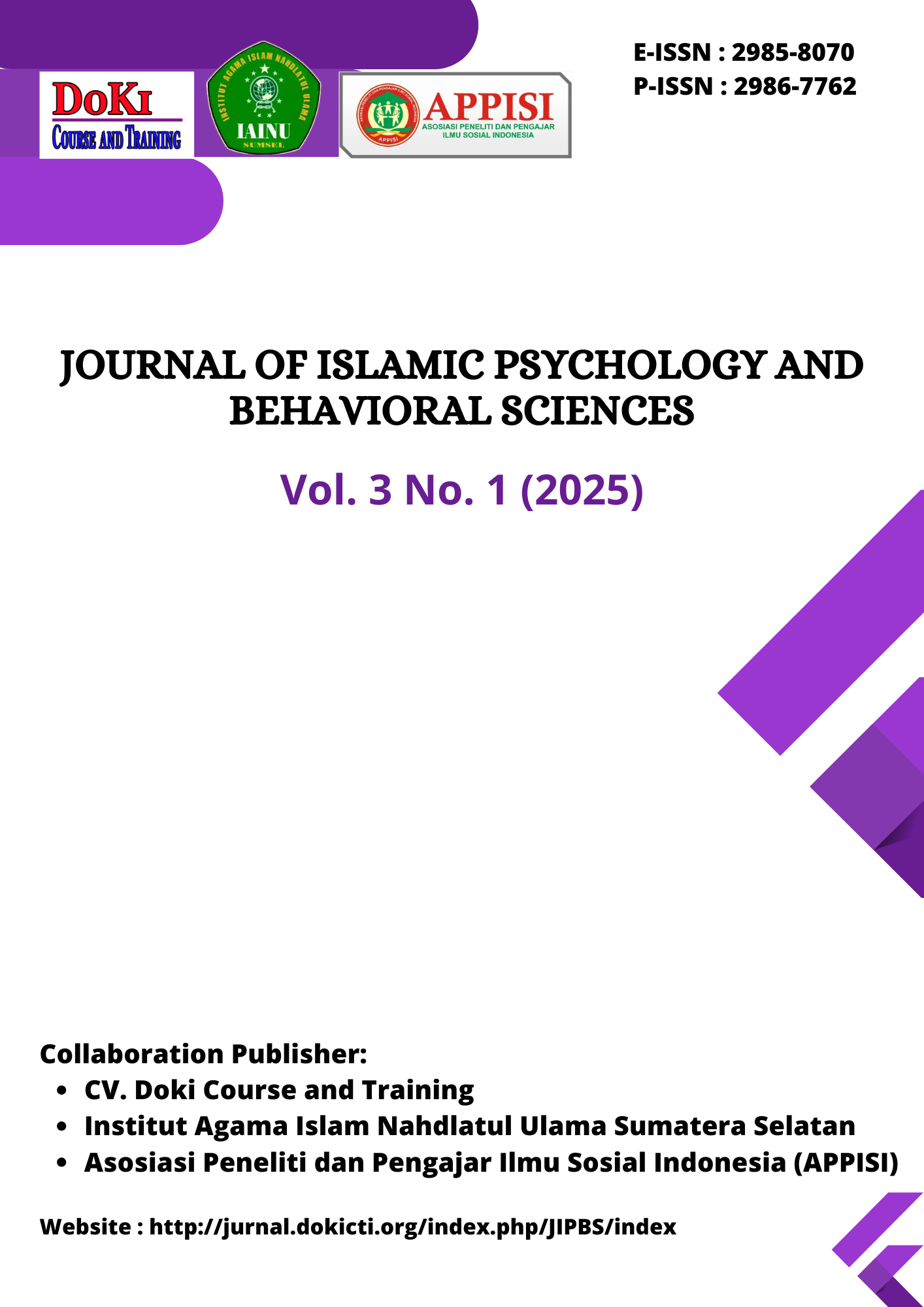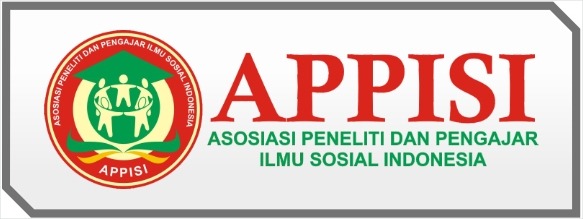Efektivitas Terapi Religius Coping dalam Mengatasi Self- Harm pada Mahasiswa
DOI:
https://doi.org/10.61994/jipbs.v3i1.389Abstract
Self-harm adalah tindakan sengaja melukai diri sendiri, baik secara fisik maupun emosional. Perilaku ini biasanya terjadi pada individu yang mengalami stres, kecemasan, atau depresi. Self-harm dapat memberikan dampak negatif yang signifikan pada kesehatan fisik, emosional, dan sosial individu. Menurut para ahli, self-harm adalah masalah kesehatan mental yang serius dan dapat berdampak negatif pada kehidupan seseorang. Individu yang terpapar trauma psikologis dan fisik dalam waktu yang lama mungkin mengalami kesulitan dalam mengatur emosi dan perilaku mereka. Oleh karena itu, self-harm menjadi cara untuk mengurangi rasa sakit dalam hubungan interpersonal dan dapat memiliki konsekuensi neurobiologis yang dapat menyebabkan ketergantungan pada perilaku ini. Makalah ini bertujuan untuk mengeksplorasi peran penanganan religius dalam mengatasi self-harm dari perspektif individu yang mengalaminya. Berdasarkan penelitian sebelumnya, strategi coping religius telah terbukti efektif dalam membantu individu mengatasi depresi dan self- harm. Konseling yang mengintegrasikan aspek religius juga membantu meningkatkan kesehatan mental dan mengurangi risiko self- harm pada remaja dengan gangguan kesehatan mental. Dapat disimpulkan bahwa penanganan self-harm yang komprehensif memerlukan dukungan profesional dan lingkungan yang positif. Religius coping dapat menjadi strategi alternatif bagi individu yang mengalami self-harm.
References
Amelia, A. (2021). Strategi Coping Remaja Pelaku Self-Harm. Jurnal Psikologi, 10(1), 11- 22.
Al-Modallal, H. M., & Abu Zayed, R. K. (2014). Self-harm in Islam: A focus group study with Muslim men in Jordan. Perspectives in Psychiatric Care, 50(2), 92-101. https://doi.org/10.1111/ppc.12033.
Badaruddin, M. A. (2018). The Concept of Sabr in Islam and Psychology. Makara Human Behavior Studies in Asia, 22(2), 105-111. https://doi.org/10.7454/hubs.asia.9925.
Baker, C. M., & Gorsuch, R. L. (2011). Religion and Coping: The Current State of Knowledge. Handbook of the Psychology of Religion and Spirituality, 315-330.
Brausch, A. M., & Muehlenkamp, J. J. (2018). Body image, self-esteem, and body mass index in adolescent females: Combining peer crowds and peer subtype. Body Image, 25, 87-94. https://doi.org/10.1016/j.bodyim.2018.01.009.
Brown, C., & Jaffe, A. (2015). Religion and Self-Harm among College Students.
Brown, R. C., Plener, P. L., & Braehler, E. (2016). Treating self-injury: A systematic review and meta-analysis of psychological and pharmacological interventions. British Journal of Psychiatry, 208(3), 172-179. https://doi.org/10.1192/bjp.bp.114.152254.
Call, K. T., Ashcraft, A. S., Terry, M. K., & Ellis, N. R. (2019). Religious Coping, Mental Health Outcomes, and Self-Harm Behaviors among Adolescent Psychiatric Outpatients.
Cossrow, N. H., & Bender, B. G. (2011). Psychological correlates of self-destructive behavior in children with asthma. The Journal of Asthma, 48(9), 921-928. https://doi.org/10.3109/02770903.2011.620944.
Davidov, D. M., Grigorenko, E. L., & Little, T. D. (2016). Religiousness and Adolescents' Self-Perceived Purpose in Life: An Examination of Mediation and Moderation Effects.
Dein, S. (2013). Islamic perspectives on self-harm and suicide. Mental Health, Religion & Culture, 16(6), 605-611. https://doi.org/10.1080/13674676.2012.750462.
Favazza, A. R. (1996). Bodies under siege: Self-mutilation and body.
Ferrell, B. R., & McCaffery, M. (2015). Spiritual Beliefs, Practices, and the Perceived Relationship to Pain Management in Hospice Palliative Care. Palliative Care and Pain Management at the End of Life, 71-86.
Gebhardt, E., König, J., & Buddeberg-Fischer, B. (2015). Influence of Religiosity/Spirituality and Coping Processes on the Risk of Non-Suicidal Self- Injury in Adolescents.
Johnson, S. M., Laurenceau, J. P., & Levy, K. N. (2008). Getting to the heart of the matter: The role of attachment in religious beliefs and behavior. Attachment and Bonding: A New Synthesis, 317-330.
Kabat-Zinn, J. (2005). Wherever you go, there you are: Mindfulness meditation in everyday life. Hachette UK.
Karimah, A. (2021). Self-Harm pada Remaja: Penyebab, Dampak, dan Intervensi. Jurnal Keperawatan Jiwa, 11(1), 11-17.
Keles, B. (2016). The Importance of Religion in Young Patients with Suicidal Behaviour. Journal of Religion and Health, 55(3), 820-831. https://doi.org/10.1007/s10943-015- 0050-4.
Khalifah, S. (2019). Dinamika Self-Harm pada Remaja. Skripsi: UIN Sunan Ampel, 20-30.
King, D. B., & Boyatzis, C. J. (2015). Exploring the Role of Religious Leaders in Fostering Positive Character Virtues: Religious Leader Social Emotional Competencies in Advocating for Humility and Forgiveness. Psychological Perspectives on Power and Influence in Organizations, 196-220.
Klonsky, E. D. (2011). The functions of self-injury. American Psychological Association. Koenig, H. G. (2009). Handbook of religion and health. Oxford University Press.
Kress, V. E. (2015). Religious coping and self-harm: A review of the literature. Journal of Religion and Health, 54(2), 383-399.
Linehan, M. M. (2015). DBT Skills Training Manual: Second Edition. Guilford Press. Malchiodi, C. (2007). The art therapy sourcebook. McGraw Hill Professional.
Mentzoni, R. A., Kvale, G., & Casey, L. (2017). The Role of Spirituality and Religiosity in the Relationship between Depression and Non-Suicidal Self-Injury.
National Institute of Mental Health. (2023). Self-harm.
Nock, M. K. (2010). Self-Injury. Annual Review of Clinical Psychology, 6, 339-363.
Pargament, K. I. (1997). The psychology of religion and coping: Theory, research, and practice. New York: Guilford Press.
Posner, M. J., O'Connor, E., & Byrne, S. (2014). The functions of self-harm in adolescents: A qualitative analysis. Journal of Adolescence, 37(2), 247-255. https://doi.org/10.1016/j.adolescence.2013.08.004.
Ryan, M. (2012). Bibliotherapy: A neglected aspect of higher education pedagogy.
Teaching in Higher Education, 17(5), 511-522.
Sabihi Anggi Rahmawati, Setia Asyanti (2022). Spiritual coping pada remaja yang melakukan self harm. Jurnal Psikologi, 10(1), 1-10.
Sheikh, S., & Black, J. (2010). Islamic perspectives on self-harm and suicide. The Psychiatrist, 34(3), 109-112. https://doi.org/10.1192/pb.bp.108.022202.
Siedlecki, K. L., & Hodge, D. R. (2017). Religious coping as a moderator between discrimination and depressive symptoms. Journal for the Scientific Study of Religion, 56(2), 274-292. https://doi.org/10.1111/jssr.12350.
Soesilo, D. (2013). Perilaku self-harm pada remaja. Jurnal Psikologi Klinis dan Kesehatan Mental, 2(1), 1-12.
Swinton, J., & Pattison, S. (2010). Moving beyond clarity: toward a thin, vague, and open theological reflection as a basis for faith-based health and social care. Nursing Philosophy, 11(1), 65-76.
Taylor, P. J., Jomar, K., Dhingra, K., & Forrester, R. (2018). A qualitative analysis of intentional self-injury in adults. Archives of Suicide Research, 22(4), 593-611. https://doi.org/10.1080/13811118.2017.136337.
The Trevor Project. (2023). Self-harm.
Van der Kolk, B. A. (2014). The Body Keeps the Score: Brain, Mind, and Body in the Healing of Trauma. Viking.
Veague, H.B (2008). Cutting and Self-Harm. Chelsea House. New York. World Health Organization (WHO). (2014). Self-harm.
Williams, J. M. (2017). Self-harm: A guide for parents and carers. Jessica Kingsley Publishers.
Yang, T., Li, J., Dan, M., Wang, Y., Wang, Y., & Li, L. (2019). Effectiveness of Religious Coping on Anxiety and Depression among Muslim Students. Journal of Religion and Health, 58(5), 1633-1645. https://doi.org/10.1007/s10943-019-00874-1.
Downloads
Published
Issue
Section
License
Copyright (c) 2025 Mustika Marlina, Resi Suci Amanda, Saputra Agung Suroji, Dzaky Juliansyah, Mulia Putri

This work is licensed under a Creative Commons Attribution-ShareAlike 4.0 International License.

Journal of Islamic Psychology and Behavioral Sciences by https://jurnal.dokicti.org/index.php/JIPBS/index
is licensed under a Creative Commons Attribution-ShareAlike 4.0 International Licensel












